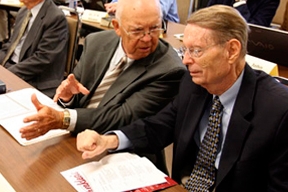Dang, but my assignment of all bibliobloggers into five categories along the conservative-liberal spectrum has caused some discussion. A few have mildly objected to their labelling (which goes to show that we bibliobloggers are a critical lot), while, for some others, the reaction has been more one of amusement. Hopefully the list, which has reached 110 [129] bibliobloggers [and counting…], will also be useful to many of you in locating blogs you are interested in. I read many of the discussions concerning the list, and was open to changing the classifications whenever anybody particularly objected or offered half a reason for doing so. I admit that some of my classifications were off the mark, so if you want me to make further changes, I probably won’t object.
I should clarify what I meant by the five categories. I’ll do so with respect to biblical inspiration, doctrine, and typical reading material.
- 1. Very conservative: You probably hold to the doctrine of inerrancy, or some version close to it. You can name a number of heresies offhand. And you have DA Carson, FF Bruce, or an Apollos Commentary in your bookshelf.
- 2. Fairly conservative: The Bible is ‘The Word of God’ in some sense. You have spent time wondering whether ’emergent’ or ’emerging’ better describes yourself. You have an NT Wright or James Dunn book in your bookshelf.
- 3. Conservative liberal: You really like the Jesus Seminar, and believe that what Jesus was really on about was people loving each other rather than condemning people. You have books by Marcus Borg and John Spong on your bookshelf.
- 4. Liberal: You esteem the Bible for the work it is. You spend a lot of time working out ways to read the Bible which can liberate it for different readers. You have a book on queer readings of the Bible on your bookshelf.
- 5. Very Liberal: You approach biblical books like any other books, taking the good stuff with the bad shit. You often stop and wonder why you bother with a field riddled with so many apologists. You have Foucault, Said, and Philip Pullman on your bookshelf.
Yeah, yeah – labels are bad, inadequate, and obfuscatory, too. But you know that a part of you was reaching out to the Father and saying, yeah daddy, give me some comfort in all this chaos! And don’t give me that ‘I’m an individual’ BS. You are what you are mostly because of society’s pre-existing labels.
… incidentally, the reason I compiled what John Lyons labelled “an inspired burst of pedantic and nerdish endeavour” will be revealed on Nov 1. Keep watching this Bat Channel.







